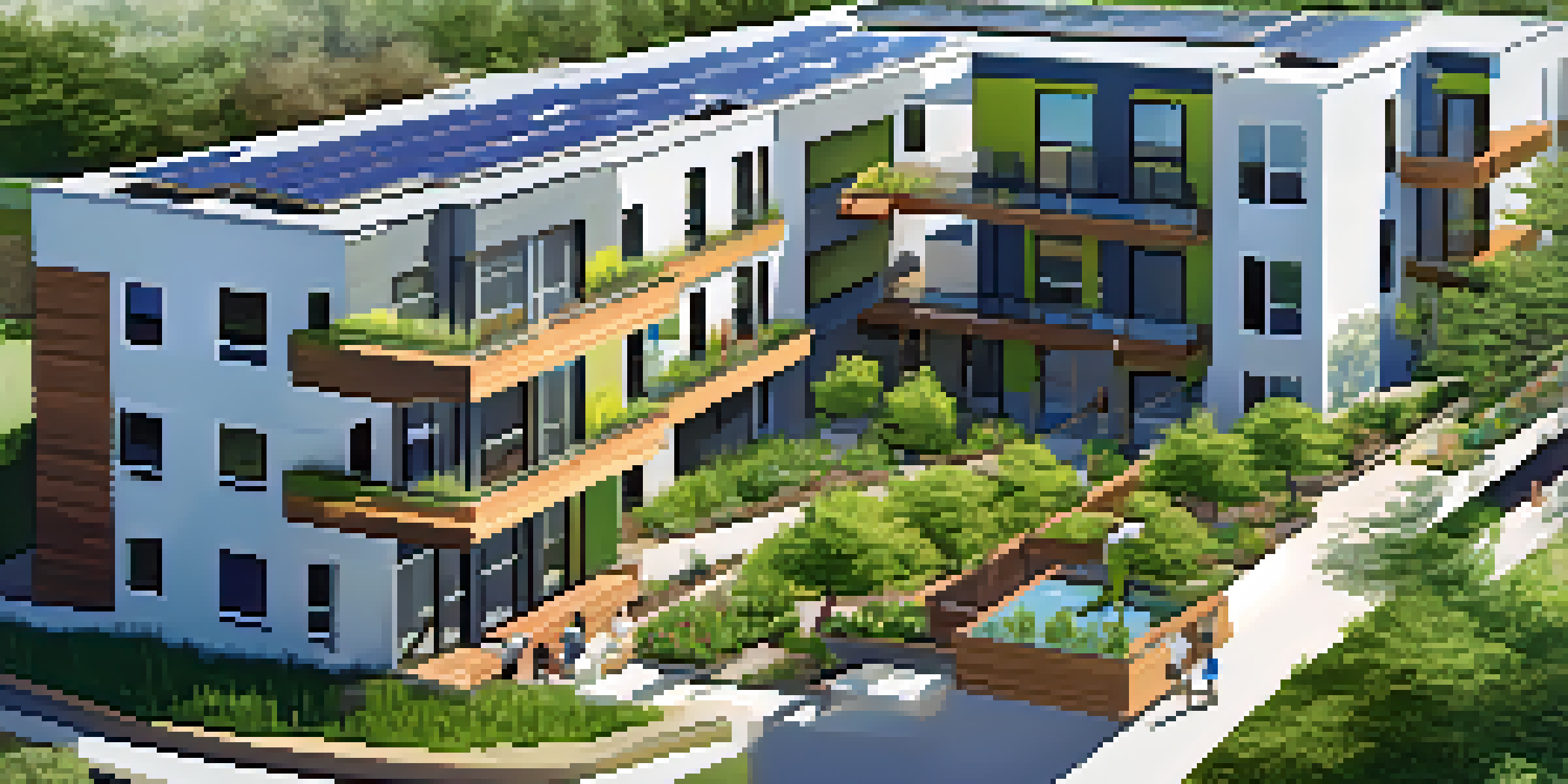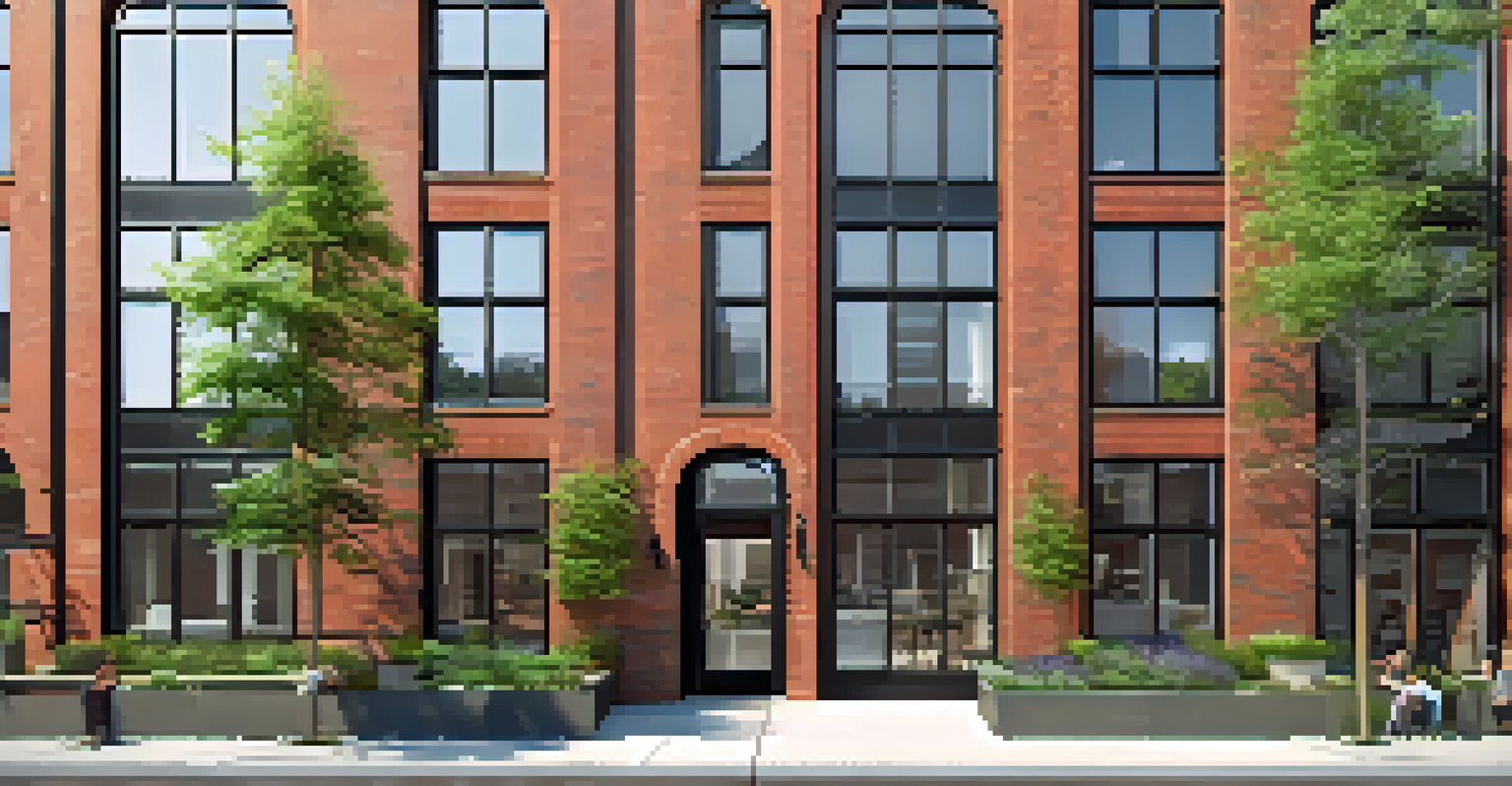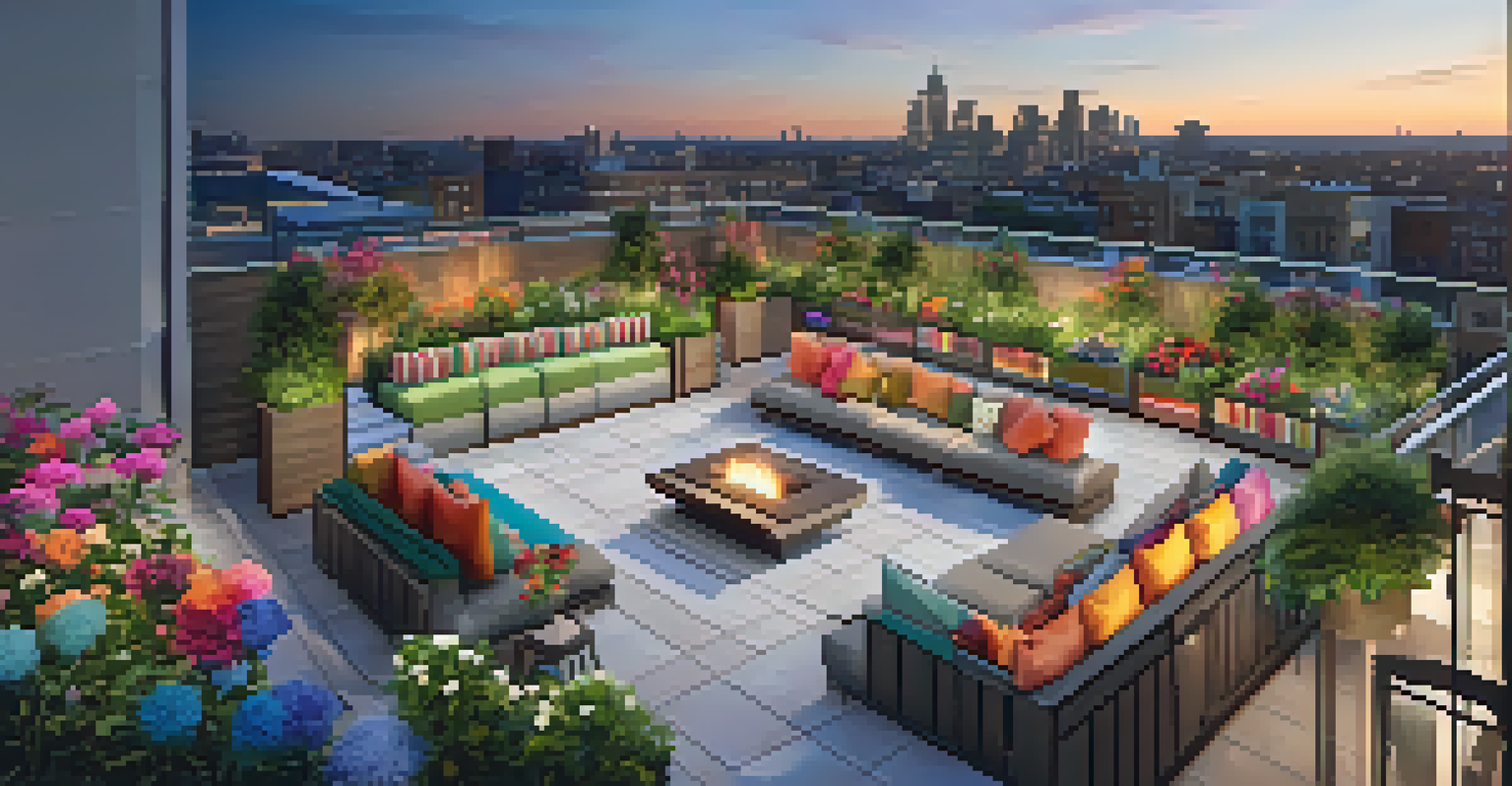Trends in Multi-Family Housing Developments in Austin

Rising Demand for Multi-Family Housing in Austin
Austin's population has been on a steady rise, making it one of the fastest-growing cities in the U.S. This growth has fueled an increased demand for multi-family housing developments, as many residents seek affordable and accessible living options. The city’s unique blend of culture, technology, and education attracts a diverse demographic, from young professionals to families.
Sustainable buildings are not just an option; they’re a necessity for our future.
As a result, developers are responding by creating more multi-family units, such as apartments and condominiums, to cater to this evolving market. With urban living becoming increasingly popular, multi-family housing is seen as a practical solution to meet the needs of a growing population. This trend not only helps reduce urban sprawl but also promotes a more sustainable way of living.
Many of these developments are strategically located near public transportation and essential amenities, making them even more appealing to potential residents. As demand continues to rise, we can expect to see even more creative and innovative housing solutions emerge in Austin.
Sustainable Building Practices in New Developments
Sustainability has become a cornerstone of modern multi-family housing developments in Austin. Developers are increasingly incorporating eco-friendly materials and energy-efficient technologies into their projects. This focus on sustainability not only helps the environment but also appeals to eco-conscious renters who prioritize green living.

For example, many new complexes are now designed with features like solar panels, rainwater harvesting systems, and energy-efficient appliances. These elements not only reduce the carbon footprint of the buildings but also lower utility costs for residents. In a city known for its vibrant outdoor lifestyle, such sustainable practices resonate well with the community's values.
Growing Demand for Multi-Family Homes
Austin's population surge is driving developers to create more multi-family housing options to meet the needs of diverse residents.
Additionally, many developers are seeking certification through programs like LEED (Leadership in Energy and Environmental Design), which recognizes environmentally friendly building practices. This trend underscores a growing commitment to sustainability that aligns with Austin's ethos as a progressive city.
Emphasis on Community Amenities and Spaces
In Austin's multi-family housing developments, there is a significant emphasis on creating community-centric amenities. Developers are recognizing that attracting residents goes beyond just offering apartments; it involves fostering a sense of community. This focus on communal spaces creates a welcoming atmosphere that encourages social interactions among residents.
Community is the foundation of a healthy society; it is where we find our belonging.
Common amenities now include features like rooftop gardens, fitness centers, coworking spaces, and outdoor lounges. These spaces cater to the modern lifestyle, where work-life balance is essential. Such amenities not only enhance the living experience but also contribute to a stronger community bond among residents.
By incorporating these engaging spaces, developers are successfully creating environments where residents can thrive socially and personally. This trend reflects a broader shift toward valuing community engagement in urban living.
Integration of Smart Home Technology
As technology continues to evolve, so does its integration into multi-family housing. Smart home technology is becoming a standard feature in many new developments in Austin. These technologies offer convenience, security, and energy efficiency, making them highly attractive to potential renters.
Residents can now control lighting, heating, and security systems right from their smartphones. This level of convenience is particularly appealing to tech-savvy individuals who prioritize efficiency in their daily lives. Moreover, smart technology can help reduce energy consumption, aligning with the sustainability trend we discussed earlier.
Focus on Sustainability in Housing
Developers in Austin are increasingly incorporating eco-friendly materials and technologies to appeal to eco-conscious renters.
Developers are recognizing that these smart features not only enhance the living experience but also provide a competitive edge in a crowded market. As more residents seek out these modern conveniences, we can expect the prevalence of smart home technology in Austin's multi-family developments to continue growing.
Affordable Housing Initiatives and Solutions
With rising costs of living in Austin, affordable housing initiatives are becoming a priority for both developers and city officials. The challenge of providing affordable options is crucial to maintain the city's diverse demographic. Many developers are now focusing on creating mixed-income housing projects that offer various price points to cater to a broader audience.
These initiatives often involve collaboration between public and private sectors to ensure that affordable housing options are integrated into new developments. Such partnerships can lead to innovative solutions that benefit the community while also making financial sense for developers. Additionally, these projects can revitalize neighborhoods and stimulate local economies.
By prioritizing affordable housing, Austin aims to strike a balance between growth and inclusivity, ensuring that all residents can enjoy the city's vibrant lifestyle. This trend reflects a commitment to addressing housing challenges head-on.
Urban Infill and Redevelopment of Existing Sites
Urban infill is gaining traction in Austin as developers focus on repurposing existing sites rather than expanding into new areas. This approach not only makes efficient use of available land but also helps maintain the character of neighborhoods. By redeveloping underutilized properties, developers can provide much-needed housing while preserving the community's essence.
For instance, old warehouses and commercial buildings are being transformed into modern multi-family housing complexes. This trend not only revitalizes areas but also provides residents with unique living spaces that blend history with contemporary design. It’s an exciting way to breathe new life into the city without sprawling outwards.
Importance of Community Amenities
Modern multi-family developments in Austin prioritize communal spaces and amenities to foster a sense of community among residents.
Urban infill contributes to a more walkable environment, reducing the reliance on cars and fostering a stronger sense of community. This development strategy aligns perfectly with Austin's goals of sustainability and community-focused living.
The Role of Local Government in Housing Development
Local government plays a crucial role in shaping multi-family housing developments in Austin. Through zoning regulations, incentives, and policies, city officials can influence the types of projects that are built and their overall impact on the community. This proactive approach helps ensure that developments align with the city's growth goals and community needs.
For example, the city has implemented programs to encourage affordable housing and sustainable practices, making it easier for developers to incorporate these elements into their projects. By offering tax incentives or streamlining the permitting process, local government can foster an environment conducive to innovation and responsible development.

As Austin continues to grow, the collaboration between developers and local government will be essential to create a balanced, thriving community. This partnership can help address pressing housing challenges while promoting economic growth and quality of life for all residents.